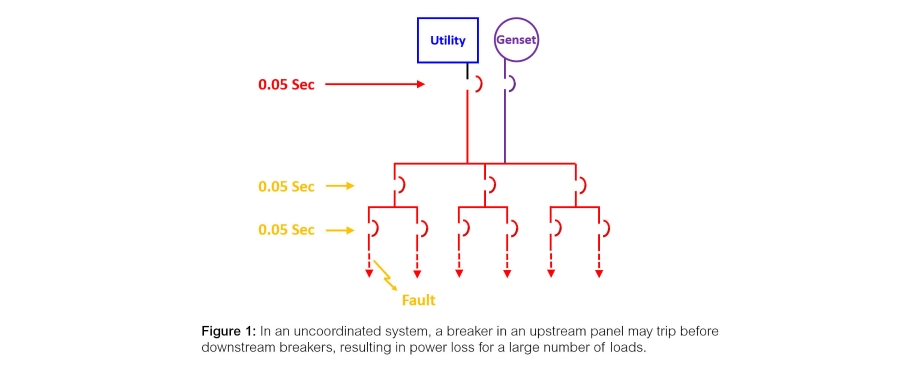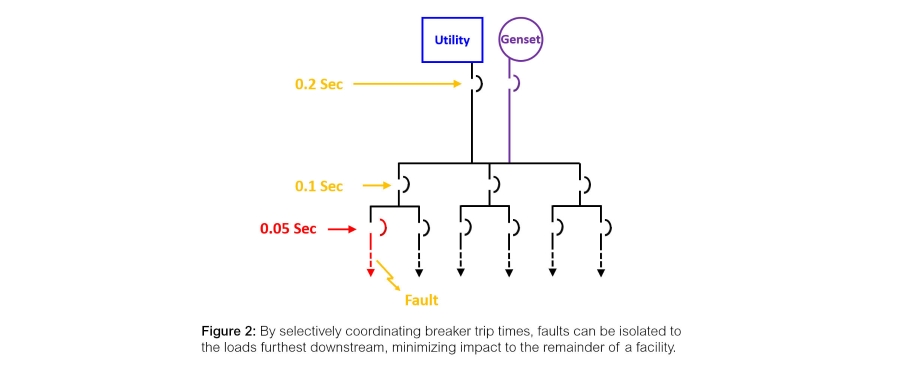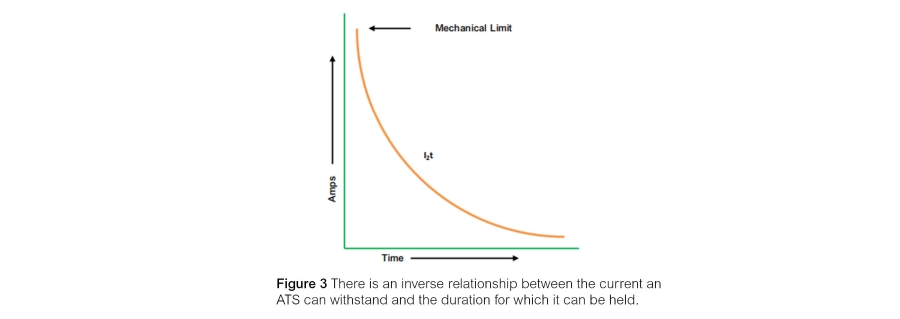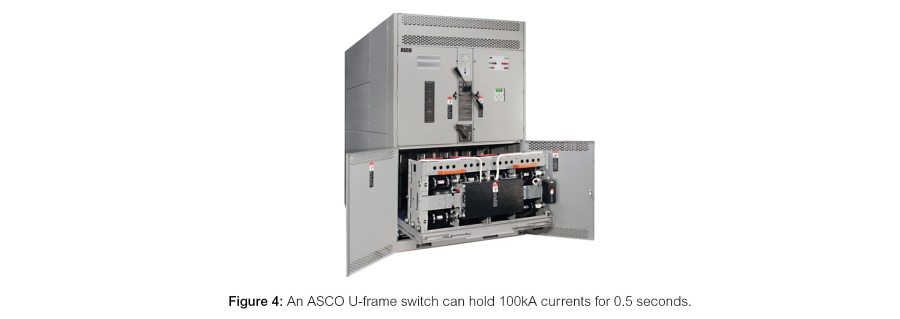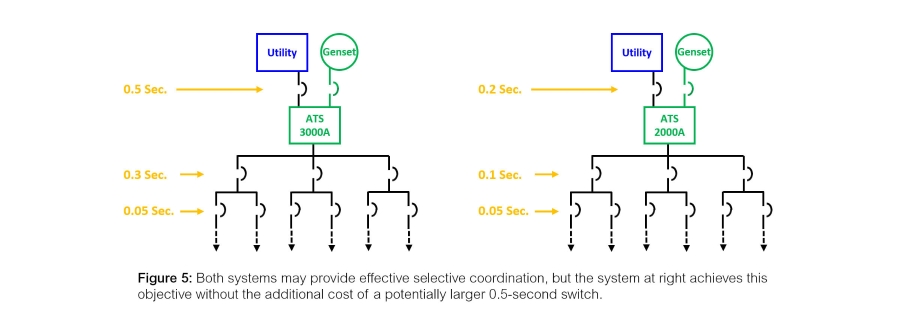Revision 1
Many power distribution systems use selective coordination strategies to minimize the amount of equipment impacted when overcurrent protection devices open. Although selective coordination is achieved using fuses and circuit breakers, Automatic Transfer Switches (ATSs) placed in these systems must support the selective coordination strategy. This document describes selective coordination concepts and provides guidance on specifying appropriate automatic transfer switches.
PROBLEMS IN UNCOORDINATED POWER DISTRIBUTION SYSTEMS
In a power distribution system equipped with multiple levels of overcurrent protection devices, circuit breakers or fuses are located in primary, secondary, and tertiary distribution circuits. If a fault occurs far from the primary distribution panel in an uncoordinated system (a system using devices with similar trip times), it is possible that an overcurrent protection device could open far upstream of the fault location, as shown in Figure 1. The tripped breaker would disconnect power to an unnecessarily large portion of a facility.
Many power distribution systems use selective coordination strategies to minimize the amount of equipment impacted when overcurrent protection devices open. Although selective coordination is achieved using fuses and circuit breakers, Automatic Transfer Switches (ATSs) placed in these systems must support the selective coordination strategy. This document describes selective coordination concepts and provides guidance on specifying appropriate automatic transfer switches.
PROBLEMS IN UNCOORDINATED POWER DISTRIBUTION SYSTEMS
In a power distribution system equipped with multiple levels of overcurrent protection devices, circuit breakers or fuses are located in primary, secondary, and tertiary distribution circuits. If a fault occurs far from the primary distribution panel in an uncoordinated system (a system using devices with similar trip times), it is possible that an overcurrent protection device could open far upstream of the fault location, as shown in Figure 1. The tripped breaker would disconnect power to an unnecessarily large portion of a facility.



